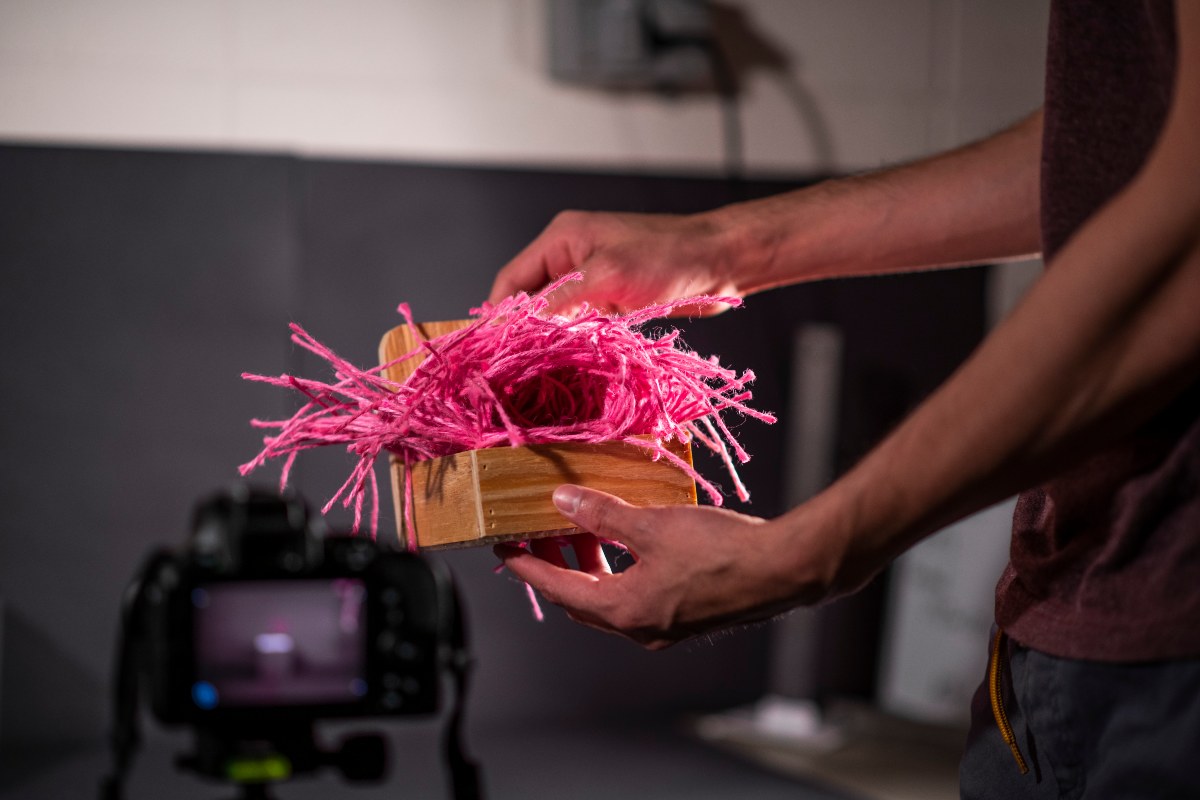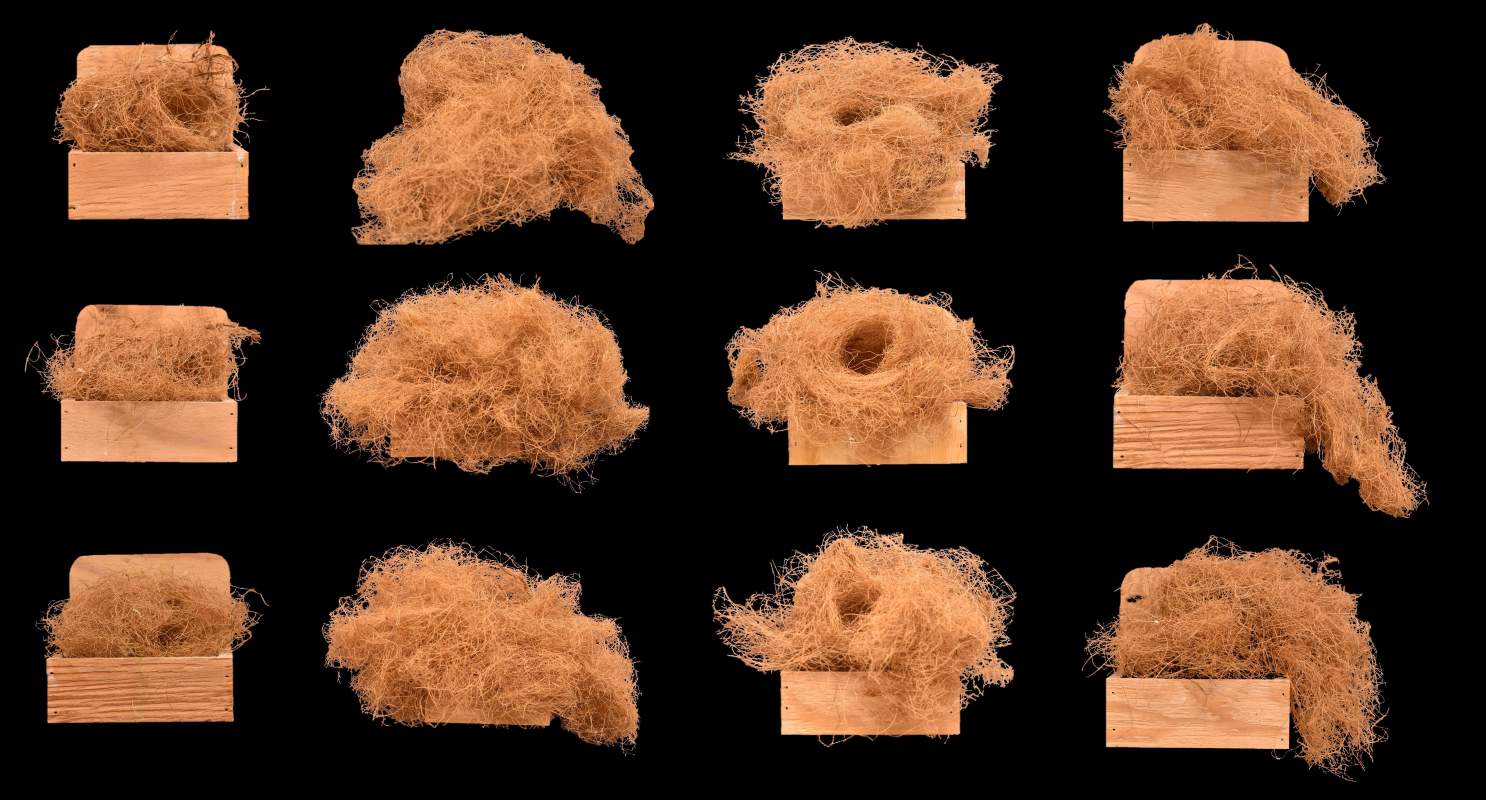Birds can build nests, but do they have style?
Donna McKinnon - 22 July 2024
From cities to small towns, we are surrounded by architecture. Many of us can recognize unique architectural styles and a few among us can identify the actual architect behind a particular design.
In the bird world, the same may be true. We know that nests are distinctive between different types of birds — you would never mistake a robin’s bowl-shaped nest for a magpie’s elongated, dome-like structure — but within specific breeds, nests may also be recognizably different between individual members. Does this mean birds have personality?
Lauren Guillette, Canada Research Chair Cognitive Ecology (Tier 2) and principal investigator for the Animal Cognition Research Group in the Department of Psychology, has been researching avian cognition for years. Two new papers, Zebra finches have style: Nest morphology is repeatable and associated with experience and How do birds make decisions when building nests?, co-authored by post-doctoral researcher Ben Whittaker suggests that in zebra finches, individuals do make unique choices in terms of design, and with experience, these style preferences become more refined, repeatable and resource savvy.
“We study cognition — how we acquire information, how we process new and past information and how we then recall the information through memory and perhaps use that information to make decisions. A lot of psychologists study this in humans, but we prefer non-humans because they're a bit easier to manage,” laughs Whittaker.
Nest building is an important part of the bird's life cycle. They build nests in order to lay their eggs, hatch their chicks and raise their offspring. Zebra finches, small songbirds that are bred in captivity but native to Australia, are ideal subjects for study because the males build many nests in short periods of time, using a variety of materials. While finches may be born with the ability to build nests, as Guillette and Whittaker’s study shows they are also capable of learning from past experiences in order to build consistent, more economical nests.
“As psychologists, we try to answer these questions from a cognitive point of view,” says Guillette. “How do birds know how to do this? Is it a learned behaviour? If not learned, is there room for learning and can they get better at dealing with a problem if they experience it more than one time? It’s about problem-solving.”
The experimental group of finches were supplied with coconut fibre nest-building materials. One group was given the opportunity to practice building five nests using string, while the other was not. Both groups then built nests which were compared for size, shape and entrance orientation of successive nests.
The experienced birds had a consistent nest style and used less material compared to inexperienced birds. As Guillette notes, this indicates that learning opportunities influence nest style, adding that using fewer resources may be advantageous if that particular style has been successful or resources are limited.
“Being a more efficient builder, they're getting faster and they're using less of their time and energy to find the materials to build their nest,” says Whittaker. “As an analogy, architects progress through their careers, developing their skills and learning from their past experiences — what worked, what didn’t work so well. We see parallels in birds. Over time, their style is being refined and becoming more consistent.”
Guillette stresses that their birds would not be building nests unless they were at the pinnacle of health. Observations are done remotely through a series of cameras to avoid disturbing their activities. Designing these experiments, she says, is a creative act, merging her intellectual curiosity and passion for avian cognition with the rigors of a scientific enquiry.
“We can’t really talk to animals,” says Guillette. “And so, the thing I love most about what we do is that we have to know about biology to ask questions about the brain and behaviour, but we also have to be really clever with how we ask questions in the laboratory and figure out how to design these experiments to get the birds to answer our questions.”
Guillette says that learning that birds have unique nest designs has been surprising to general audiences, but within her own field, interest has been piqued because individual style choices may be indicative of culture.
“The birds are making choices that aren't necessarily biologically relevant, especially in terms of colour,” explains Guillette. “If they build a pink or an orange nest in the laboratory, they're just copying the style because a pink nest, as far as we know, isn’t better than an orange nest, and so birds are using that social information to make decisions about really important things like where you put your eggs. So our work is contributing to this growing body of animal work that shows that animals do indeed have what looks like the building blocks of culture — and that's what gets other scientists really excited about the work we're doing.”
The research was funded by the Natural Sciences and Engineering Research Council of Canada Discovery Grants Program and the Canada Research Chairs Program.

